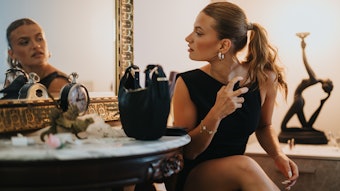
Great news for the industry: young people love beauty.
Log in to view the full article
Great news for the industry: young people love beauty.
As of spring 2024, U.S. teens' beauty spend has risen 8% year-over-year to $339, per the Piper Sandler Companies' 47th semi-annual "Taking Stock With Teens" surveya. This represents the highest spend recorded since spring 2018.
The survey results feature feedback from 6,020 teens with an average age of 16.1 years.
Color cosmetics are the top sector teens are spending on. That said, fragrance spend has spiked 23% year-over-year.
e.l.f. remains the top color cosmetic brand, jumping 16 points year-over-year to 38%; it also ranks in the top 10 skin care brands and beauty destinations among the teens surveyed.
According to the survey, 85% of teens prefer to shop in-store. Sephora is gaining on Ulta with these shoppers, but both have about 60% loyalty membership penetration among teens.
According to most sources, 16.1 years old is slightly older than the average Generation Alpha shopper, who were born between 2010 and 2024, with the oldest cohort just now aging into early beauty product engagement.
In a February 2024 CEW briefingb, Circana’s Larissa Jensen reported that while prestige beauty spending grew 6% in households without children, it spiked 16% in those with children, signaling emerging engagement among young consumers.
While controversial, the power of “Sephora kids” is undeniable.
During the same CEW briefing, Google data revealed that skin care searches increased in 2023, particularly among Generation Alpha consumers.
There are clear concerns when it comes to kids—particularly girls—engaging with beauty products.
Key worries include usage of products intended for older shoppers, especially products with potentially harsh active ingredients, as well as well-founded issues around unrealistic “beauty” expectations.
Yet a recent NPR report unveiled a less aesthetic reason for using beauty products. One child, “Milly,” said skin care “makes me feel kind of, like, put together and less like ahhh all over the place.”
Another child quoted in the report, “Ana,” shared, “It kind of gives me motivation … [I]t just makes me feel, like, organized.”
Spate data revealed in February, separate from the CEW briefing, that TikTok hashtags related to Sephora belie a rise in young consumer engagement: #teenskin, #skincarefortweens and #momtips.
Similarly, high-growth hashtags associated with Ulta include #skincareforkids. Among the retailer’s most popular content is a video focused on a store advisor discussing suitable skin care products for tween girls.
So while parents may differ on how much beauty shopping is acceptable when, it's clear that young consumers are engaging in the sector across categories.
FOOTNOTES
awww.gcimagazine.com/consumers-markets/news/22892607/us-teens-beauty-spending-jumps-8-vs-last-year
bwww.gcimagazine.com/consumers-markets/article/22889775/decoding-generation-alpha-beauty










